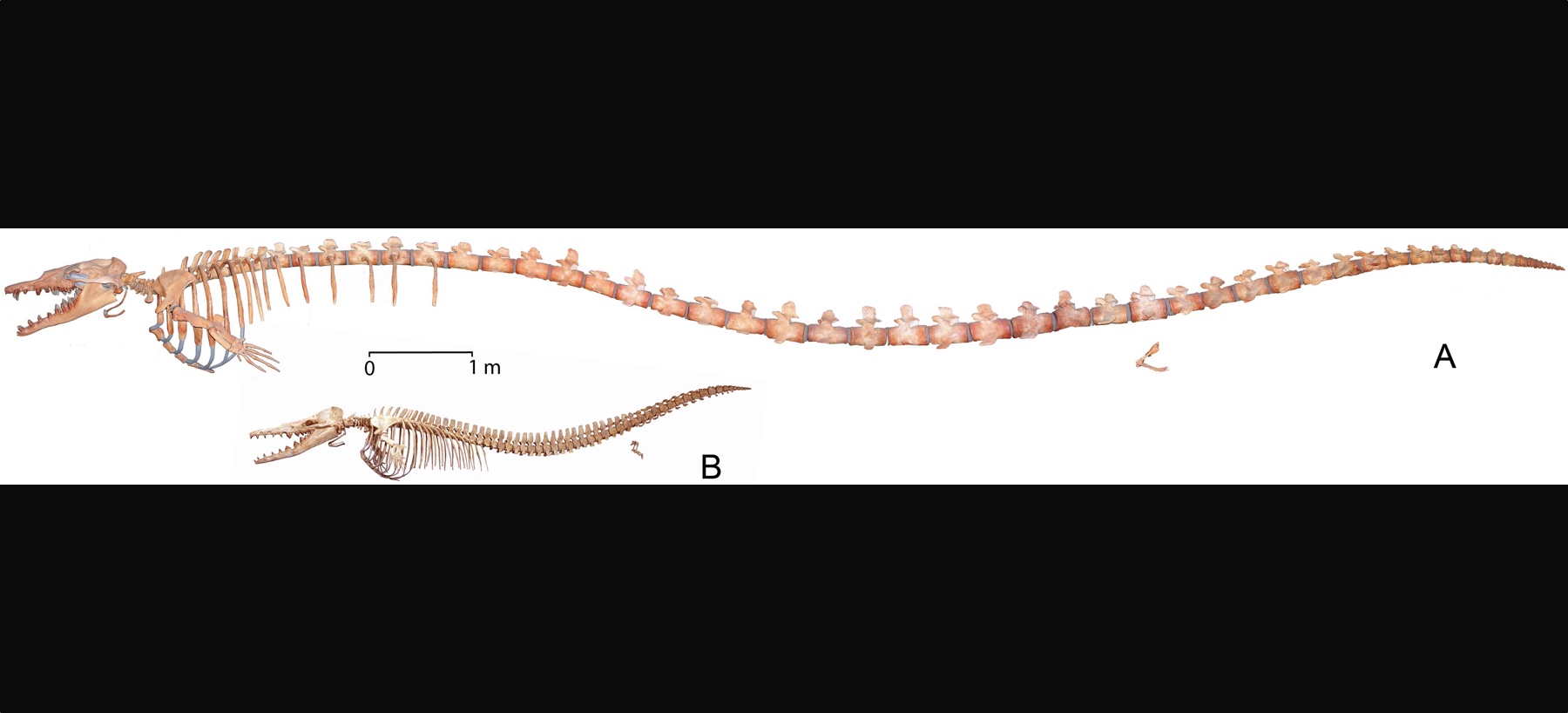Ancient, 50-Foot-Long Whale Crushed Baby Whale Skulls for Dinner
An ancient whale twice the length of today's orcas once chowed down on other whales in the Eocene epoch's seas.
A fossil discovered in Egypt appears to preserve the whale, an extinct species called Basilosaurus isis, with the bones of a smaller whale species in its stomach. Researchers suspect that the toothy B. isis hunted nurslings of the species Dorudon atrox, delivering killing bites to the smaller whales' skulls before consuming the prey.
"B. isis itself had a long snout and was armed with pointed incisors and sharp cheek teeth," study author Manja Voss, a marine mammal researcher at the Berlin Museum für Naturkunde, told Live Science in an email. These fearsome features suggest that the whale was an apex predator of its time. [Image Gallery: Ancient Monsters of the Sea]
Marine monster
Basilosaurus isis lived between 34 million and 38 million years ago and grew to between 50 and 60 feet (15 and 18 meters) in length. Close relatives of this toothy whale have previously been found fossilized with the remains of fish and sharks in their abdominal areas, suggesting that the whales hunted or scavenged.
But a 2010 discovery of a B. isis fossil in Egypt's Wadi Al-Hitan (Valley of Whales) is the first-ever specimen of the species found preserved with its last meal inside it. The valley, about 87 miles (140 kilometers) southwest of Cairo, is a hotspot for whale fossils, with hundreds of skeletons found preserved there.
Fossils at Wadi Al-Hitan are often found on the surface, Voss said, their white bones gleaming in the sun. That's how researchers discovered the new B. isis, which was already exposed by wind and erosion. Scientists removed the fossilized stomach contents for analysis, but they left the rest of the whale covered in sediment after they'd taken photos and measurements, so the fossil would be protected.
Among the jumble of bones found mixed with the whale's skeleton were teeth, skull fragments, vertebrae and ribs of D. atrox, an ancient species of whale that grew to about 16 feet (5 m) long. Some of the skull fragments had bite marks that appeared to match B. isis's teeth.
Get the world’s most fascinating discoveries delivered straight to your inbox.
Whales eating whales
B. isis could have scavenged these fellow whales, but Voss and her colleagues said they suspect that B. isis hunted its fellow cetaceans. Bite marks on the skull suggest a killing attack, the researchers reported today (Jan. 9) in the journal PLOS ONE, not a scavenging nibble, which would be more likely to target the fatty abdominal area. What's more, several juvenile D. atrox skeletons have been found in the Valley of the Whales, the researchers wrote.
"Something killed them," Voss said. The large and toothy B. isis is a perfect suspect, she said. Its anatomy suggests it was a killer, and it could have easily hunted juvenile D. atrox. Modern whales of D. atrox's size nurse alongside their mothers for up to two years, the researchers wrote, making these young whales vulnerable targets for large hunters.
A modern equivalent would be orcas, which are about half the size of Basilosaurus at up to 23 to 32 feet (7 to 9.7 m) long. Orcas hunt a variety of other marine animals, including whales; in one 2017 incident off the coast of California, a particularly deadly pod of orcas killed four gray whales, including one calf, in a week. The fossils suggest that the "whales-eating-whales" behavior started very early in whale evolution, Voss said.
The fossilized stomach contents of the large whale also included teeth from the 3.2-foot-long (1 m) ancient fish Pycnodus mokattamensis, suggesting that B. isis hunted large fish, too. Researchers also found a single tooth from a shark called Carcharocles sokolovi, a creature that would have been about 16 feet (5 m) long. B. isis may have hunted large sharks, the researchers wrote — orcas occasionally try to take down great whites in the modern day — but it's more likely that the shark lost its tooth while scavenging the B. isis carcass.
- The 10 Weirdest Sea Monsters
- In Photos: Spooky Deep-Sea Creatures
- These Bizarre Sea Monsters Once Ruled the Ocean
Originally published on Live Science.

Stephanie Pappas is a contributing writer for Live Science, covering topics ranging from geoscience to archaeology to the human brain and behavior. She was previously a senior writer for Live Science but is now a freelancer based in Denver, Colorado, and regularly contributes to Scientific American and The Monitor, the monthly magazine of the American Psychological Association. Stephanie received a bachelor's degree in psychology from the University of South Carolina and a graduate certificate in science communication from the University of California, Santa Cruz.




